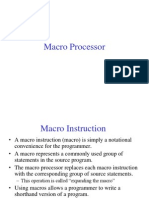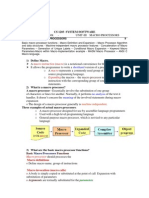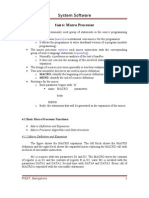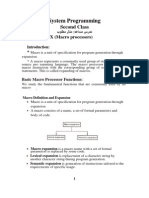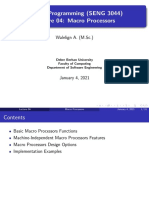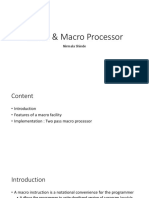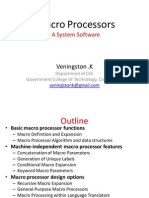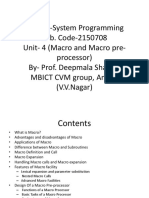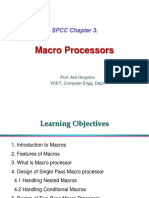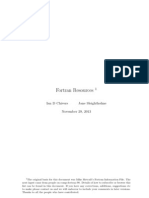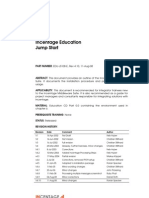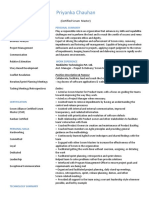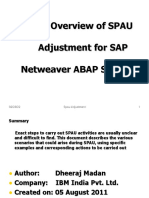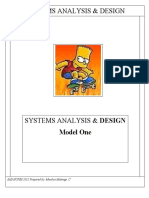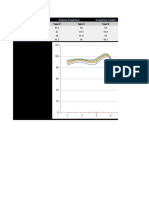0% found this document useful (0 votes)
67 views32 pagesMacro Part1
The document discusses macros in assembly language programming. It defines a macro as a block of code that is written once but can be reused multiple times by using the macro's name. Macros are expanded by the assembler, replacing each macro invocation with the body of the macro. The document outlines the basic functions of a macro processor, including macro definition with the MACRO and MEND directives, and macro expansion by substituting arguments for parameters. It also discusses handling nested macros and labels within macros.
Uploaded by
Anver S RCopyright
© © All Rights Reserved
We take content rights seriously. If you suspect this is your content, claim it here.
Available Formats
Download as PDF, TXT or read online on Scribd
0% found this document useful (0 votes)
67 views32 pagesMacro Part1
The document discusses macros in assembly language programming. It defines a macro as a block of code that is written once but can be reused multiple times by using the macro's name. Macros are expanded by the assembler, replacing each macro invocation with the body of the macro. The document outlines the basic functions of a macro processor, including macro definition with the MACRO and MEND directives, and macro expansion by substituting arguments for parameters. It also discusses handling nested macros and labels within macros.
Uploaded by
Anver S RCopyright
© © All Rights Reserved
We take content rights seriously. If you suspect this is your content, claim it here.
Available Formats
Download as PDF, TXT or read online on Scribd
/ 32


